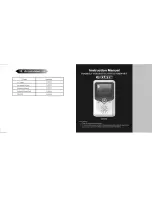
7.6.
Fault finding
Refer to the user manual and engine and alternator maintenance manuals appended.
Additionally, in the event of an abnormal rise in engine temperature, check that the radiator is clean.
7.7.
No load and under load tests
Notes on operation at no load and under load:
When operating at no load or low load (< 30% of nominal power), the operating conditions do not allow optimum running of the engine.
The main causes are as follows:
The low volume of fuel burned in the combustion chamber leads to incomplete combustion; the resulting thermal energy means that
the optimum engine operating temperature cannot be reached.
Overheated engines have lower compression ratios (low compression ratio without turbocharging), which are defined for full load
and not suitable for good combustion at low load.
All of these factors lead to choking of the engine, in particular the piston rings and valves, which leads to:
Accelerated wear and glazing of the cylinder liners
Loss of sealing of seats, and sometimes sticking of valve stems.
Consequently, operating any turbocharged engine at low load (< 30%) can only have adverse repercussions on an engine's operation
and its service life. Maintenance intervals will have to be shortened to accompany harsh operating conditions. Shortening draining
intervals, among other things, will enable you to change the oil more frequently, which will tend to be choked with unburnt particles and
contaminated with fuel. Adding a load bench is generally used to limit low load phases, and obtain the periodic full loads necessary to
unchoke the engine.
Finally, when operating under load, we advise vigilance towards the oil breather circuit, and more particularly towards engines which
have the crankcase vent connected to the turbocharger inlet (risk of oil or oil vapour absorption and accelerated engine speed).
On load tests:
It is recommended to conduct an on load test on the generating set monthly, for a period of around 1 hour after stabilisation of the
parameters.
The load must be greater than 50% of nominal power (ideally 80%), to ensure unchoking of the engine and to obtain a decent picture of
the generating set operation.
Off load test (no load):
This test is not recommended; it must not exceed 10 minutes, and must not be repeated without a monthly on load test. This test only
allows you to check for correct engine start-up. It does not allow you to check that the generating set is working properly.
84/242
Содержание R33C3
Страница 2: ......
Страница 61: ...The following diagram shows the structure of the main menu and how to go to each parameter 59 242 ...
Страница 94: ...92 242 ...
Страница 95: ...10 Appendix 10 1 Appendix A Engine user and maintenance manual 93 242 ...
Страница 96: ...94 242 ...
Страница 98: ...96 242 ...
Страница 115: ...113 242 ...
Страница 135: ...133 242 ...
Страница 145: ...143 242 ...
Страница 179: ...177 242 ...
Страница 191: ...July 2009 Pub No 99610 29120 OPERATION MAINTENANCE MANUAL 189 242 ...
Страница 192: ...Printed in Japan Pub No 99610 29120 190 242 ...
Страница 193: ...10 2 Appendix B Alternator user and maintenance manual 191 242 ...
Страница 194: ...192 242 ...
Страница 196: ...194 242 ...
Страница 227: ...Installation and maintenance R250 A V R 4067 en 2009 05 b LEROY SOMER 11 225 242 ...
Страница 242: ...14 LEROY SOMER 2010 11 f Installation and maintenance R438 NOTES 3971 en 240 242 ...
Страница 243: ...LEROY SOMER 15 2010 11 f Installation and maintenance R438 NOTES 3971 en 241 242 ...
















































